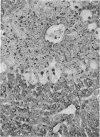Abstract
Treatment of rats with phenobarbital, which stimulates the activity of the drug-metabolizing enzymes in the liver, potentiates hepatic necrosis elicited by bromobenzene and a number of other chemically inert halogenated aromatic hydrocarbons. Radioautographic studies indicate that [14C]bromobenzene is covalently bound at the sites of necrosis. From these results, it is inferred that the hepatotoxic effects of the halogenated aromatic hydrocarbons are mediated by chemically active metabolites formed in hepatocytes. In accord with this view, a number of aromatic halogenated hydrocarbons are converted by microsomes in vitro to active intermediates which form covalent complexes with glutathione (GSH).
Full text
PDF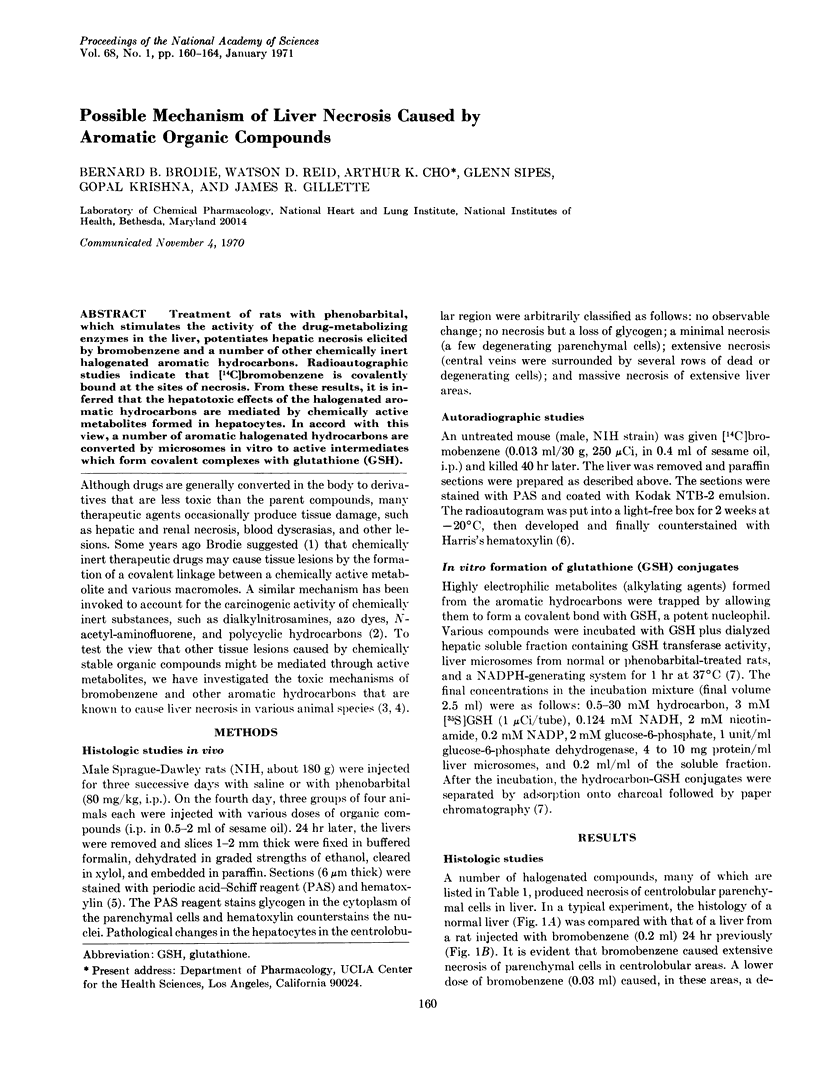
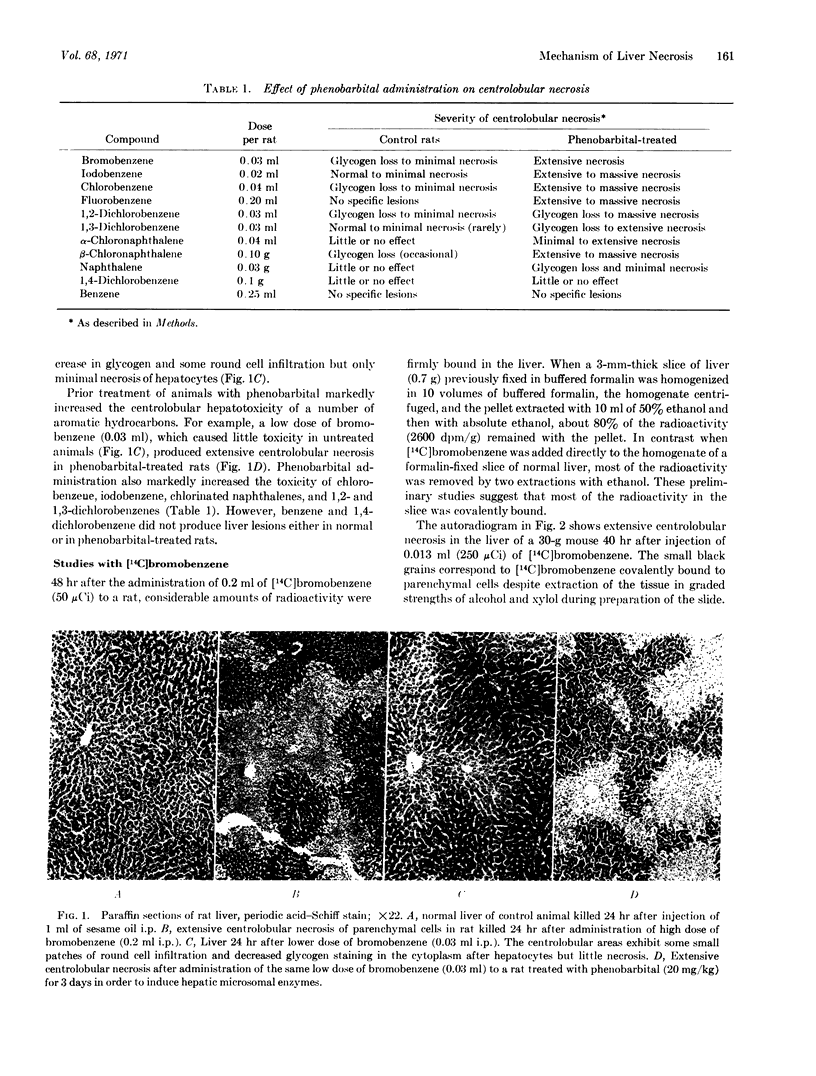
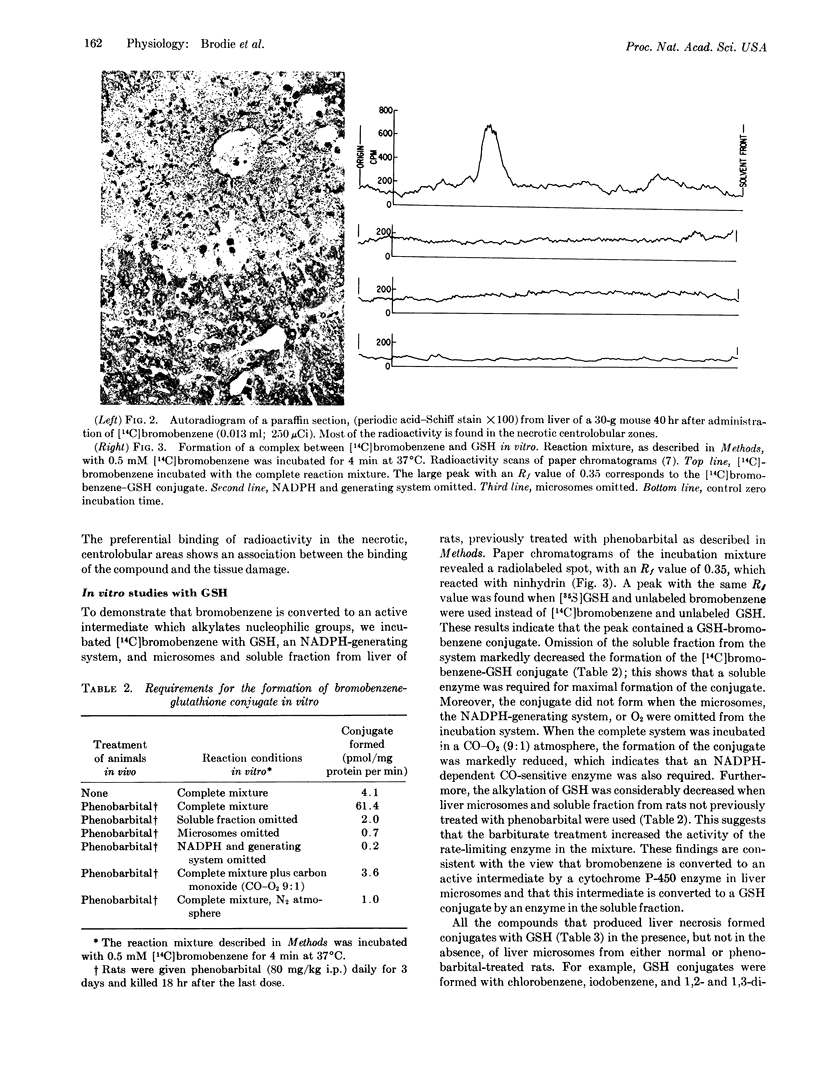
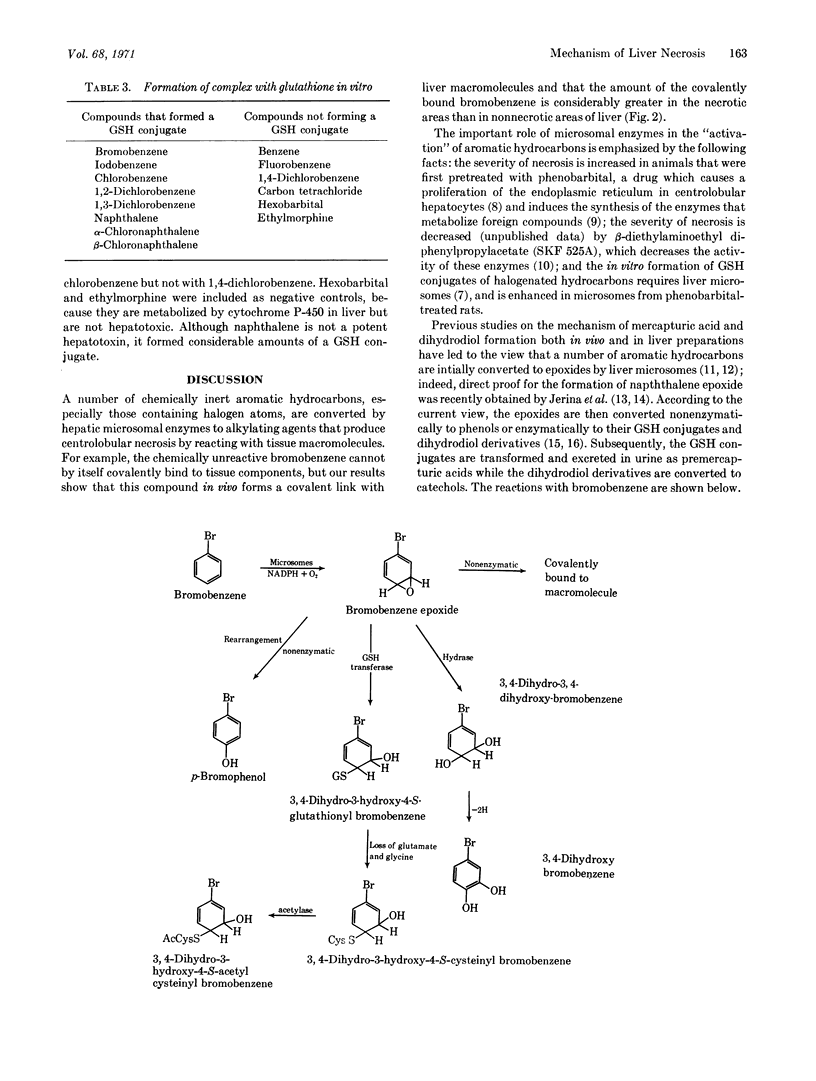
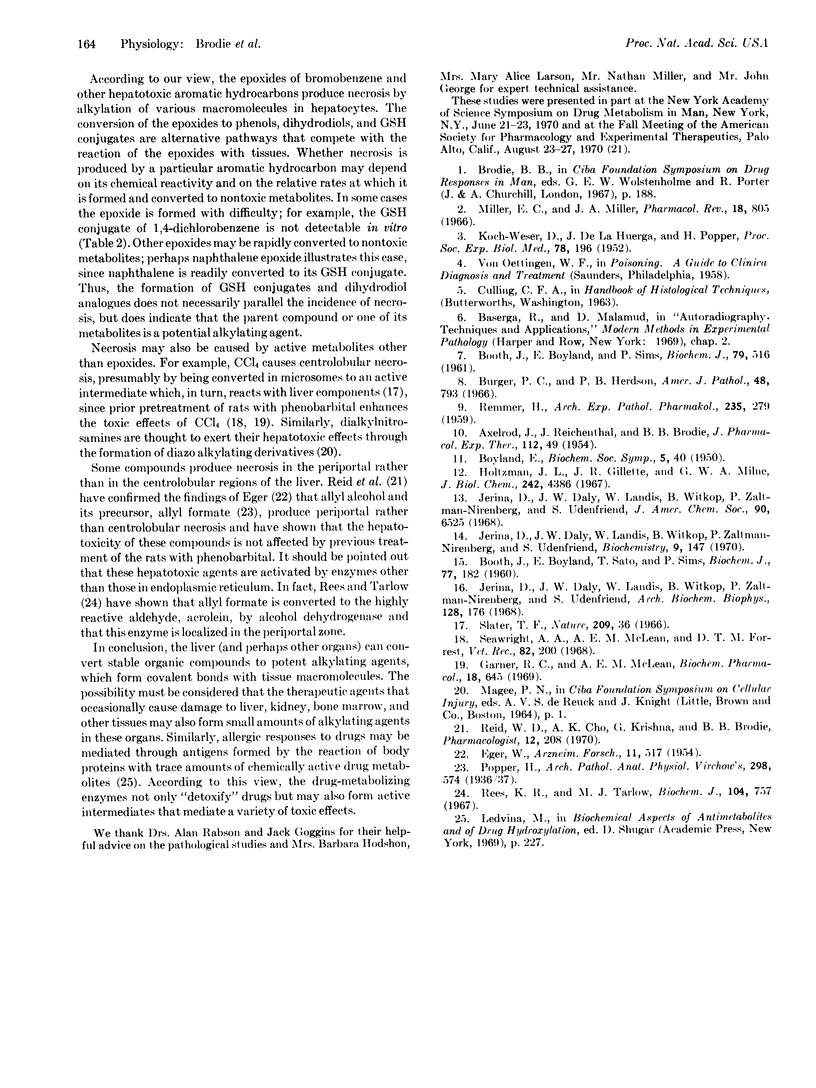
Images in this article
Selected References
These references are in PubMed. This may not be the complete list of references from this article.
- AXELROD J., REICHENTHAL J., BRODIE B. B. Mechanism of the potentiating action of beta-diethylaminoethyl diphenylpropylacetate. J Pharmacol Exp Ther. 1954 Sep;112(1):49–54. [PubMed] [Google Scholar]
- Booth J., Boyland E., Sato T., Sims P. Metabolism of polycyclic compounds. 17. The reaction of 1:2-dihydronaphthalene and 1:2-epoxy-1:2:3:4-tetrahydronaphthalene with glutathione catalysed by tissue preparations. Biochem J. 1960 Oct;77(1):182–186. doi: 10.1042/bj0770182. [DOI] [PMC free article] [PubMed] [Google Scholar]
- Booth J., Boyland E., Sims P. An enzyme from rat liver catalysing conjugations with glutathione. Biochem J. 1961 Jun;79(3):516–524. doi: 10.1042/bj0790516. [DOI] [PMC free article] [PubMed] [Google Scholar]
- Burger P. C., Herdson P. B. Phenobarbital-induced fine structural changes in rat liver. Am J Pathol. 1966 May;48(5):793–809. [PMC free article] [PubMed] [Google Scholar]
- EGER W. Uber Lebernekrosen und ihre Beeinflussung durch Penicillin. Arztl Forsch. 1954 Nov 10;8(11):I/517–I/522. [PubMed] [Google Scholar]
- Jerina D. M., Daly J. W., Witkop B., Zaltzman-Nirenberg P., Udenfriend S. 1,2-naphthalene oxide as an intermediate in the microsomal hydroxylation of naphthalene. Biochemistry. 1970 Jan 6;9(1):147–156. doi: 10.1021/bi00803a019. [DOI] [PubMed] [Google Scholar]
- Jerina D. M., Daly J. W., Witkop B., Zaltzman-Nirenberg P., Udenfriend S. The role of arene oxide-oxepin systems in the metabolism of aromatic substrates. 3. Formation of 1,2-naphthalene oxide from naphthalene by liver microsomes. J Am Chem Soc. 1968 Nov 6;90(23):6525–6527. doi: 10.1021/ja01025a058. [DOI] [PubMed] [Google Scholar]




